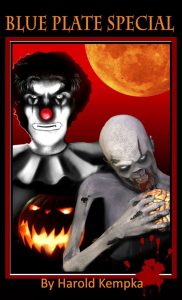 When I reviewed a proof for Night to Dawn 31, it occurred to me that though I often blogged about writing and my Mylar balloons, I mentioned little about NTD magazine. Some folks have asked me what goes into putting a magazine together. An editor once told me about software he was using to do his magazine.
When I reviewed a proof for Night to Dawn 31, it occurred to me that though I often blogged about writing and my Mylar balloons, I mentioned little about NTD magazine. Some folks have asked me what goes into putting a magazine together. An editor once told me about software he was using to do his magazine.
The thing is, new software comes with a learning curve, not easily navigated when you work a day job. I can do all right with old-fashioned Word if I start with a template from Lulu or Createspace. Word comes with Publisher, which I use to format the artwork, and I can convert files to PDF. When I took over the magazine in 2004, Word was just a word-processing program. Night to Dawn was a spiral-bound magazine. I knew nothing about the process, so I continued with the spiral, hiring a printer to make copies of the pages. I’d bought a coil binding machine to attach the pages. How I did it, I don’t know because I had arthritis in both hands. Three issues later, I moved to a perfect-bound book; the printer did the binding.
Mind you, printing magazines at a local printer cost over $400 back then, as opposed to Lulu or Createspace now. I had no way to make a PDF version, columns, or tucking art inside a story; I printed the stories on a plain Word document with the illustration downloaded after each piece. Thankfully, Editor Ginger Johnson talked me through the processes; so did Marge Simon and Cathy Buburuz, especially embedding illustrations.
My watershed moment came when someone at a writer’s conference told me about Lulu. I’d known about Lulu, but I thought they only handled novels. I never realized until later that I could print the magazine at a much more reasonable price. Why? Lulu and Createspace operate on a larger scale than a print shop, and can get away with charging reasonable while making a profit. Lulu’s price enabled me to use four-color covers, whereas the print shop charged extra for doing so. I still use the print shop for supplies, but leave the magazine printing to Lulu and Createspace.
Nowadays, I use Createspace to distribute my books and magazine because I can charge reasonable, get fast distribution, and get a decent royalty, but I use Lulu for the initial print run because I like the work they do with the covers. Both companies provide the templates needed for the covers and manuscript. Letter designing isn’t my strongest suit so artist Teresa Tunaley has been designing my back cover. Sandy DeLuca does the front cover and a lot of interior art. I’ve also gotten great interior illustrations from Denny Marshall, Chris Friend, and Elizabeth Pierce.
 Night to Dawn started out as a vampire magazine, but now it features different monsters, usually vampire or zombies. Night to Dawn 31, which has just gone live, has tales from the zombie’s point of view. The “welcome” page started out dry and flat, but I changed the name to “Pickings and Tidbits.” I’ve started dressing up the column by including a recipe and an anecdote about my Mylar balloons. People are always hungry and they appreciate a good laugh.
Night to Dawn started out as a vampire magazine, but now it features different monsters, usually vampire or zombies. Night to Dawn 31, which has just gone live, has tales from the zombie’s point of view. The “welcome” page started out dry and flat, but I changed the name to “Pickings and Tidbits.” I’ve started dressing up the column by including a recipe and an anecdote about my Mylar balloons. People are always hungry and they appreciate a good laugh.
The one thing I haven’t been able to do is print Night to Dawn on Kindle. It’s more about time constraints – the formatting would need a radical change, along with the illustrations. One day in the distant future, I may want to revisit Kindle. For now, though, I’m focusing on the magazine and books, and perhaps creating a few nightmares of my own.













